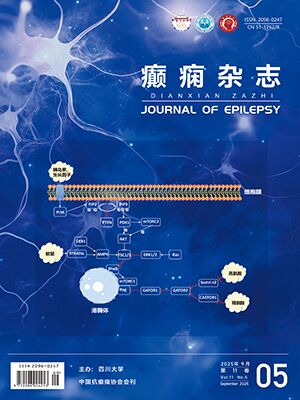| 1. |
Rosenow F, Klein KM, Hamer HM. Non-invasive EEG evaluation in epilepsy diagnosis. Expert Rev Neurother, 2015, 15(4): 425-444.
|
| 2. |
Gawel M, Zalewska E, Szmidt-salkowska E, et al. The value of quantitative EEG in differential diagnosis of Alzheimer's disease and subcortical vascular dementia. J Neurol Sci, 2009, 283(1-2): 127-133.
|
| 3. |
Miyake W, Oda Y, Ikeda Y, et al. Electroencephalographic response following midazolam-induced general anesthesia: relationship to plasma and effect-site midazolam concentrations. J Anesth, 2010, 24(3): 386-393.
|
| 4. |
何超, 陈坤, 王虑, 等. 振幅整合脑电图对ICU中枢功能障碍患者脑功能评价及生存预后评估的研究. 临床急诊杂志, 2017, 18(2): 102-105.
|
| 5. |
叶小军, 方红丽, 宋秋英, 等. 急性脑梗死患者脑电图变化及预后影响因素分析. 浙江医学, 2019, 41(15): 1587-1590.
|
| 6. |
张晓菁, 李芳莉, 张利军, 等. 3例酒精中毒性韦尼克脑病的脑电图与临床表现. 中国抗癫痫协会脑电图与神经电生理分会. 第五届CAAE脑电图与神经电生理大会会刊. 中国抗癫痫协会脑电图与神经电生理分会:中国抗癫痫协会, 2016: 290-292.
|
| 7. |
刘晓燕. 临床脑电图学, 第二版. 北京: 人民卫生出版社, 2017.
|
| 8. |
Sinha S R, Sullivan L, Sabau D, et al. American clinical neurophysiology society guideline 1: minimum technical requirements for performing clinical electroencephalography. J Clin Neurophysiol, 2016, 33(4): 303-307.
|
| 9. |
Somers B, Francart T, Bertrand A. A generic EEG artifact removal algorithm based on the multi-channel Wiener filter. Journal of neural engineering, 2018, 15(3): 036007.
|
| 10. |
Liao SC, Wu CT, Huang HC, et al. Major depression detection from eeg signals using kernel eigen-filter-bank common spatial patterns. Sensors (Basel, Switzerland), 2017, 17(6): 1385.
|
| 11. |
Seeck M, Koessler L, Bast T, et al. The standardized EEG electrode array of the IFCN. Clin Neurophysiol, 2017, 128(10): 2070-2077.
|
| 12. |
吴逊, 喻红军, 刘秀琴, 等. 健康成人α频段新划分法及其在显著概率图中的应用. 临床脑电学杂志, 1994, (04): 193-197.
|
| 13. |
Wu X, Liu LG. Study of the Alpha frequence hand of healthy adults in quantitiative EEG. Clin EEG, 1995, 26: 131-136.
|
| 14. |
杨欣伟, 黄莹, 王秋艳. 儿童癫痫脑电地形图145例分析. 第四军医大学学报, 2002, 04: 354.
|
| 15. |
江军, 匡光涛, 李承, 等. 典型失神癫痫的脑电定量分析及分类研究. 华中科技大学学报(医学版), 2016, 45(03): 315-318+323.
|
| 16. |
黄华品, 童婕, 林婉挥. 癫痫患者脑电图功率谱与认知相关性分析. 中国抗癫痫协会. 第七届CAAE国际癫痫论坛论文汇编. 中国抗癫痫协会:中国抗癫痫协会, 2017: 196-197.
|
| 17. |
何庆芳, 周红, 陆敏艳. 脑梗死后癫痫的定量脑电图特点. 中华老年心脑血管病杂志, 2017, 19(10): 1070-1073.
|
| 18. |
Benedek K, Berenyi A, Gombkoto P, et al. Neocortical gamma oscillations in idiopathic generalized epilepsy. Epilepsia, 2016, 57(5): 796-804.
|




